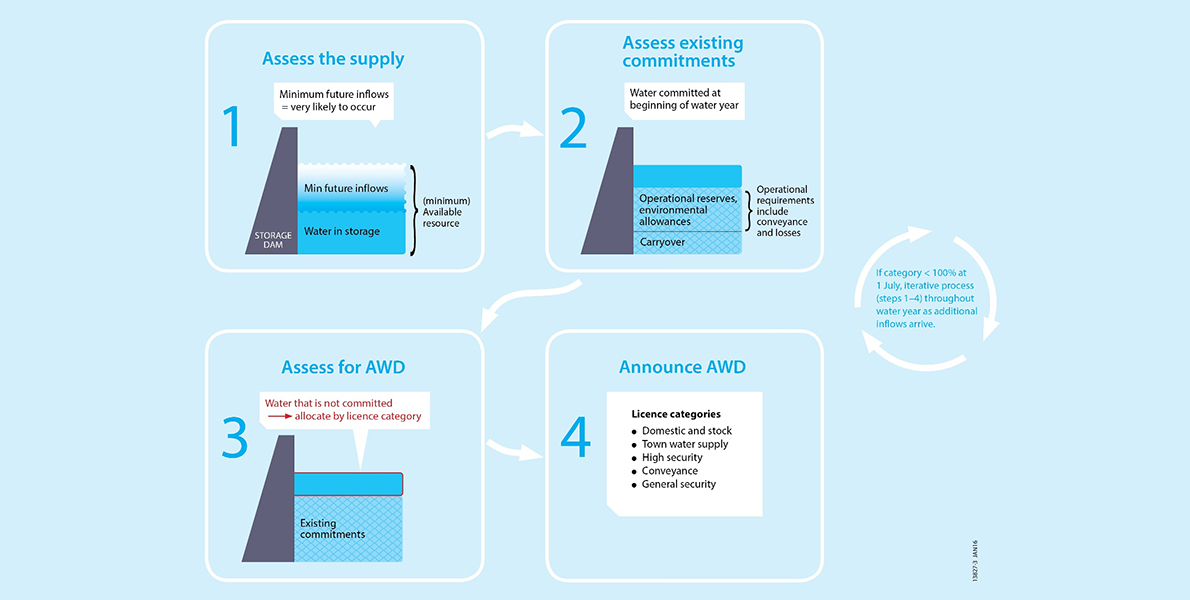Assessing water resources
When determining how much water will be allocated to water users, there are number of considerations, including:
- how much water is in storage and how much of that is carried over as unused water from the previous year, including undelivered inter-state trades, where applicable
- how much water is expected to flow into storages from natural inflows over the forecast period
- the volume required to run the river, including end of system flows, transmission losses and evaporation losses
- other requirements, including storage reserves and credits to environmental water allowances, where applicable.
In making the water resource assessment, the lowest recorded inflow sequence as at the commencement of the first water sharing plan is used so that the department only allocates water that is very likely to flow into the storages. Not all inflows contribute to increasing allocations.
Water allocation guides for major river valleys
To help people understand the way in which water is allocated to the various priorities and licence types, the department is developing guides on how the water allocation process works in each of the major regulated river valleys – see respective guides below.
- Peel Regulated River Water Source (PDF. 442KB)
- Namoi Regulated River Water Sources (PDF. 529KB)
- Gwydir Regulated River Water Source (PDF. 1,002KB)
- Hunter Regulated River Water Source (PDF. 486KB)
- Murray Regulated River Water Source (PDF. 1,271KB)
- Lachlan Regulated River Water Source (PDF. 995KB)
- Macquarie-Cudgegong Regulated River Water Source (PDF. 558KB)
- Murrumbidgee Regulated River Water Source (PDF. 1,078KB)
- NSW Border Rivers Regulated River Water Source (PDF. 619KB)
- Lower Darling Regulated River Water Source (PDF. 296KB)
- Belubula Regulated River Water Source (PDF 342KB)
- Paterson Regulated River Water Source (PDF. 440KB)
How water is allocated and shared between the Murray and Menindee Lake
The NSW government is responsible for distributing the states water between different needs by prioritising it for different uses.
Process map of how water is allocated

Download a larger diagram (JPG, 272.09 KB)
Fact sheets
Detailed information on how water is shared in the regulated Murrumbidgee and Murray valleys, as well as the Hunter regulated river water source in NSW is provided in the fact sheets below.
- How water is shared in the regulated Hunter water source
- How water is shared in the regulated Murrumbidgee Valley
- How water is shared in the regulated NSW Murray Valley
- Water allocations in Unregulated River Systems
- Operating Rules Barmah-Millewa Forest Environmental Water Allocation 2021
- Lachlan rules regarding airspace and account reset - April 2023
- Lachlan evaporation reduction - October 2023
How are water losses calculated?
This video explains how losses in river regulated systems are calculated, and how this effects water allocations in NSW.
How water allocations change
This video answers a common question about how we manage and allocate water in the Murray-Darling Basin.